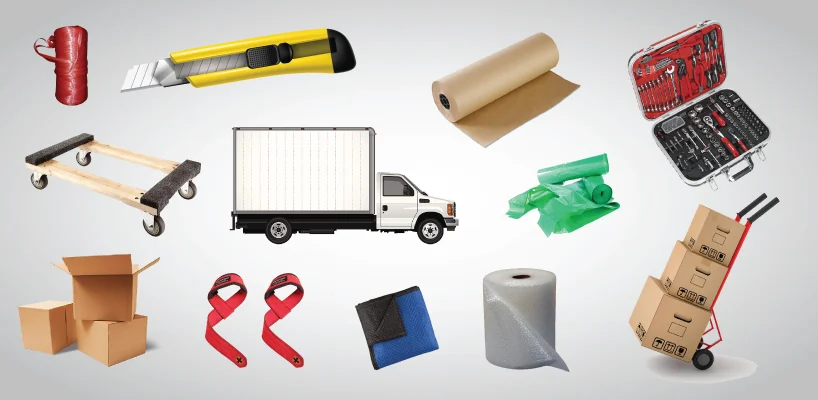Choosing where to live is like picking a playlist for a long road trip—it sets the tone for everything that follows.
One of the most noticeable shifts this year is that snowbelt migration trends in 2025 are picking up speed as more people trade the sunny skies of the South for the cool air of the North.
For decades, the Sunbelt has been the ultimate destination for many Americans.
With its warm winters, affordable housing, and growing job opportunities, it seemed the perfect place to settle down.
However, as temperatures rise and the cost of living climbs, people are beginning to rethink the advantages.
On the other hand, the snowbelt regions, once known for their cold winters and snowy landscapes, are making a strong comeback.
Well, the Snowbelt is no longer just about frigid temperatures; it’s becoming a hotspot for affordable housing, job growth, and a more balanced pace of life.
A recent study shows that 41% of respondents are now considering moving to less densely populated areas, many of which are in Snowbelt states.
In 2025, the Snowbelt will look like a smart choice for many, with financial perks, less crowded cities, and an overall higher quality of life.
So, let’s explore the factors driving this shift and why more people are heading north for new opportunities and a fresh start.
Why the Snowbelt Is the New Destination in 2025?
The idea of moving north used to come with a bit of a shiver—literally. But in 2025, the conversation has changed.
According to recent Sunbelt to Snowbelt migration statistics, thousands of Americans choose cooler climates and quieter cities over the once-booming Southern metros.
Cities like Buffalo, Madison, and Pittsburgh, once considered off-the-radar, are seeing renewed interest.
These areas attract remote workers, young professionals, and even retirees looking to escape rising home prices in places like Florida, Arizona, and Texas.
And it’s not simply a casual observation. Analysts tracking top destinations for Snowbelt migrants in 2025 have noted increased demand in real estate markets and more job openings in expanding industries like green energy and healthcare.
They’ve also observed new government initiatives to attract residents back to these regions.

Why are more Americans moving north in 2025? Affordability, jobs, and better living. Explore the best cities for young professionals.
Why People Are Leaving the Sunbelt in 2025
So, what’s behind this growing shift away from the Sunbelt?
For years, states like Florida, Texas, and Arizona seemed unbeatable because of their sunny weather, affordable living, and booming job markets. But in 2025, the picture looks different.
The Growing Impact of Climate Change
The most significant factor is the climate change. From record-breaking heat waves to intensifying wildfires, many parts of the Sunbelt are feeling the pressure.
Rising sea levels and increasingly frequent natural disasters make living in certain areas uncomfortable and unsustainable.
Insurance rates are climbing in at-risk regions, and rebuilding after repeated storm damage is becoming a financial burden for many families.
Why You Can Trust My Good Movers
550+
moving companies
listed
16,000+
customer reviews to help you decide
50+
states covered for moving services
100%
free quotes provided instantly
Opportunities in the Job Market
While the Sunbelt once led the charge in job growth, other regions are catching up fast.
The same remote work that drove people south during the pandemic now allows them to explore jobs in less saturated, less expensive areas.
With more companies expanding operations in the Midwest and Northeast, employment opportunities attracting Snowbelt movers are now a serious draw.
Rising Sea Levels and Natural Disaster Risk
It’s not just the heat—it’s the risk. Coastal cities in Florida and the Gulf states are experiencing more frequent flooding, and wildfire season now stretches for months in the West.
These conditions make homeownership riskier, which has a direct impact on housing values and quality of life.
Overcrowding and Infrastructure Challenges
Some of the fastest-growing Sunbelt cities are struggling to keep up with demand.
Overcrowded roads, overwhelmed hospitals, and strained water systems are becoming common complaints.
People who once moved for elbow room now face the congestion they tried to escape. In contrast, smaller Snowbelt cities offer a sense of space and more manageable growth.
Economic Opportunities
It might sound surprising, but rising Sunbelt costs drive people away. Once known for affordable living, many Southern metros have seen spikes in housing prices, property taxes, and everyday expenses.
The financial benefits of staying south no longer add up when compared to the cost of living in many Snowbelt cities.
Why the Snowbelt Is Becoming a Smart Move in 2025
While many are leaving the Sunbelt, the Snowbelt is becoming a new destination for those looking for a change.
Once associated only with cold winters and endless snow, the Snowbelt is now emerging as a place where affordable living and a high quality of life will attract more people north by 2025.
Affordable Housing You Can Actually Buy
One of the biggest draws for Snowbelt migration trends in 2025 is the availability of affordable housing. As prices soar in Sunbelt cities, many Snowbelt regions remain surprisingly affordable.
Whether buying your first home or finding a bigger place for a growing family, the cost of living in cities like Buffalo or Pittsburgh is much more manageable.
High-Paying Jobs in Growing Industries
Job seekers are finding that the Snowbelt also offers competitive wages. Cities in the region are seeing job growth in industries like tech, healthcare, and advanced manufacturing.
With a lower cost of living and competitive salaries, relocating north doesn’t mean sacrificing income for affordability.
Employment opportunities attracting Snowbelt movers are growing both within established companies and exciting new startups, and professionals are taking notice.
Better Quality of Life (Without the Crowds)
One of the lesser-discussed benefits of moving north is the overall improvement in quality of life.
Smaller cities with a slower pace offer a break from the crowded, fast-paced urban life many Sunbelt cities are known for.
In places like Madison and Burlington, you’ll find access to nature, less traffic, and a sense of community that’s hard to come by in larger, sprawling metropolitan areas.
The Snowbelt's low-density living makes for a more relaxed environment where people can enjoy their downtime without the constant hustle.

Seeking a better quality of life? Moving north offers fewer crowds, more nature, and a relaxed pace. Learn how to buy a house in another state before moving.
Climate Resilience & Lower Risk
Extreme weather, which has become a norm in Sunbelt cities, is prompting many to seek safer, more climate-resilient options.
The Snowbelt’s harsher winters might initially sound intimidating, but it’s a trade-off they’re willing to make for many.
The impact of climate change on U.S. migration patterns is clear: People are heading north to escape the risks of natural disasters and extreme weather events that threaten their homes and communities in the south.
Government Incentives to Move North
In addition to natural factors, government policies encouraged people to move north. Certain states offer incentives like tax breaks, rebates, and even moving stipends to attract new residents and boost their local economies.
These policies are designed to make it easier—and more financially rewarding—to relocate.

Planning your big Snowbelt move? We've listed the best movers who are ready to make your move a stress-free experience.
Snowbelt vs. Sunbelt - Which Region Wins on Cost of Living?
When it comes to choosing where to live, the cost of living is one of the biggest factors.
Below is a comparison of the average housing prices, utilities and energy costs, and transportation costs in Sunbelt and Snowbelt cities, giving you a clearer picture of what each region offers.
| Category | Sunbelt City (Example: Phoenix, AZ) | Snowbelt City (Example: Pittsburgh, PA) |
|---|---|---|
| Average Home Price | $450,000 | $220,000 |
| Monthly Utilities (Electricity, Heating, Water, Garbage) | $180 | $150 |
| Average Gas Price (per gallon) | $3.75 | $3.20 |
| Transportation Costs (Public Transit Fare) | $2.00 (one-way) | $2.50 (one-way) |
| Average Rent (1-Bedroom Apartment) | $1,800/month | $1,200/month |
Summary of Cost Differences:
- Housing: Snowbelt cities like Pittsburgh offer homes at nearly half the cost of those in Sunbelt cities like Phoenix, making it easier for residents to buy or rent a home.
- Utilities: While utility costs are somewhat comparable, Snowbelt cities tend to have slightly lower heating bills, which is a plus, given the colder winters.
- Transportation: Gas prices are typically lower in the Snowbelt, and public transportation fares are relatively close. However, some Sunbelt cities offer more affordable commuting options due to a more extensive metro system.
- Rent: Rent is generally lower in Snowbelt cities, allowing renters to stretch their budgets further.
Top 5 Snowbelt Cities to Watch in 2025
Some northern cities stand out in 2025 due to their mix of affordability, job growth, and overall liveability.
If you're thinking of heading north, here are five cities that you can consider:
Minneapolis, MN: Known for its liveability, green space, and growing tech scene, Minneapolis is attracting young professionals and remote workers.
Buffalo, NY: Affordable housing, a revitalized downtown, and a strong sense of community make Buffalo a top pick for former Sunbelt residents.
Pittsburgh, PA: With growing healthcare and tech industries, plus low home prices, Pittsburgh offers both opportunity and affordability.
Madison, WI: This college town blends startup energy, cultural life, and outdoor living—ideal for families and remote workers.
Burlington, VT: Eco-friendly, peaceful, and charming, Burlington appeals to those craving nature at a slower pace with remote flexibility.

Thinking of moving north in 2025? Get your moving checklist ready to make the transition easier!
The Future of U.S. Migration After 2025
The last few years have taught us that where people choose to live can shift fast and often for unexpected reasons.
As snowbelt migration trends in 2025 continue gaining momentum, the question now is: What does the future hold?
Experts predict this trend will extend well beyond 2025. With remote work here to stay, climate concerns are rising, and the cost of living in the Sunbelt is becoming harder to manage, so more people are exploring alternatives.
And the Snowbelt, once overlooked, is stepping up.
To accommodate the growing population, we will likely see continued investment in northern infrastructure, such as public transit, housing developments, and broadband access.
Several Snowbelt cities already offer incentives to attract remote workers and new residents. Governments are laying out welcome mats for those ready to move from grants to tax breaks.
Climate models also suggest that traditionally colder areas will become milder over the next few decades, potentially making the Snowbelt even more attractive.
In short, this migration isn’t just a reaction; it’s a reshaping of the American map.
If current trends hold, we could be witnessing the start of a long-term population realignment that will define the next generation of Americans.
Recommended Resources















































 (239) 799–6077
(239) 799–6077